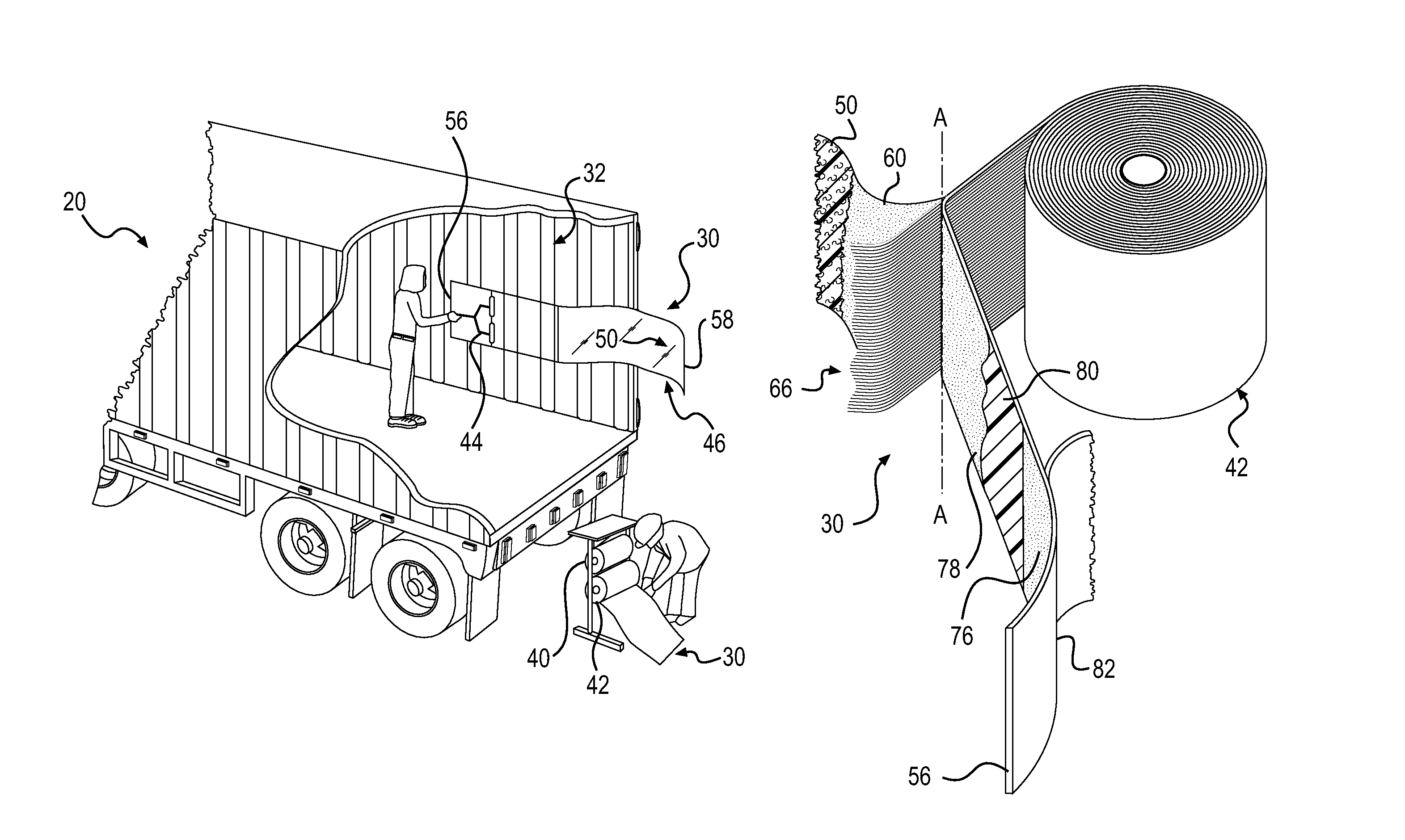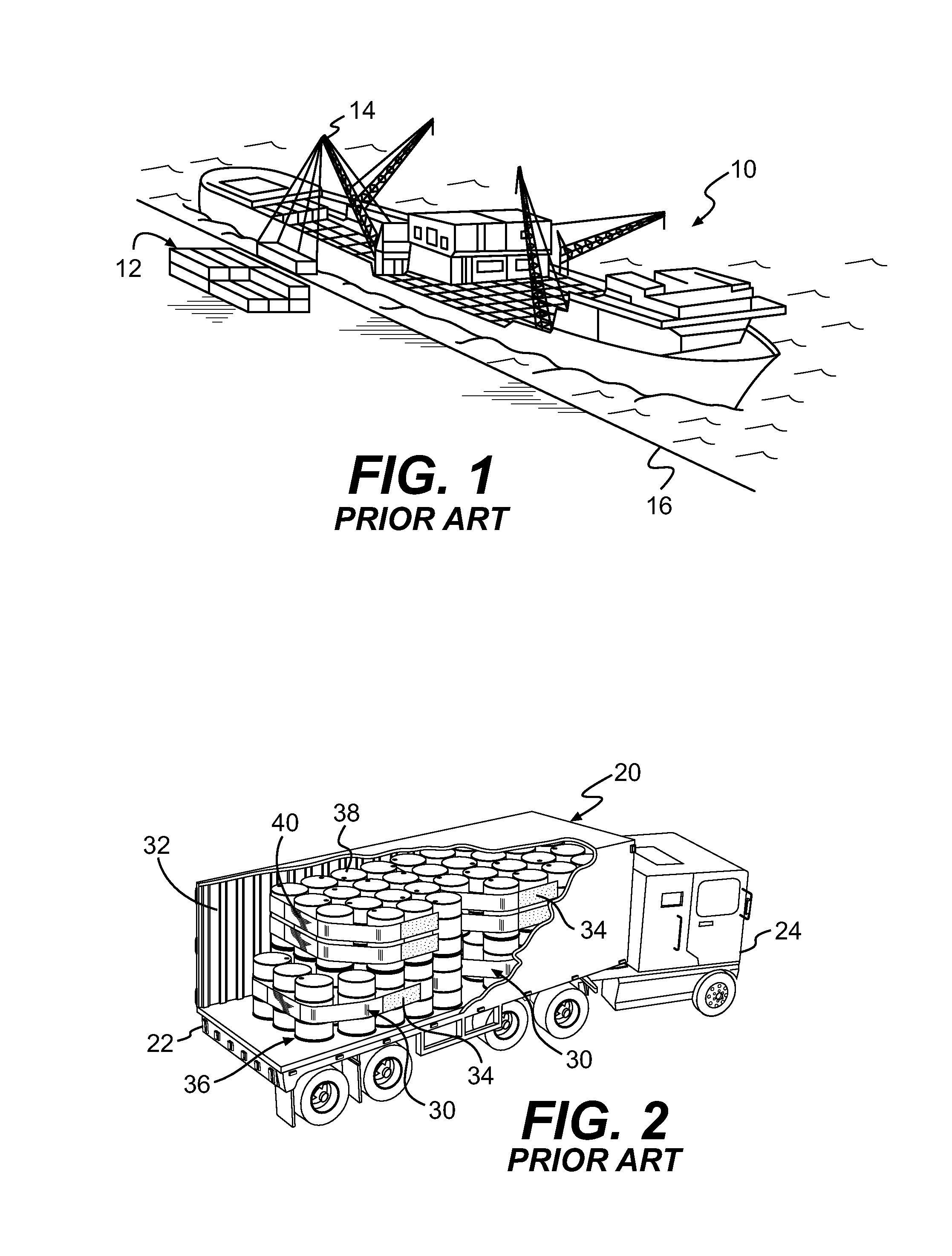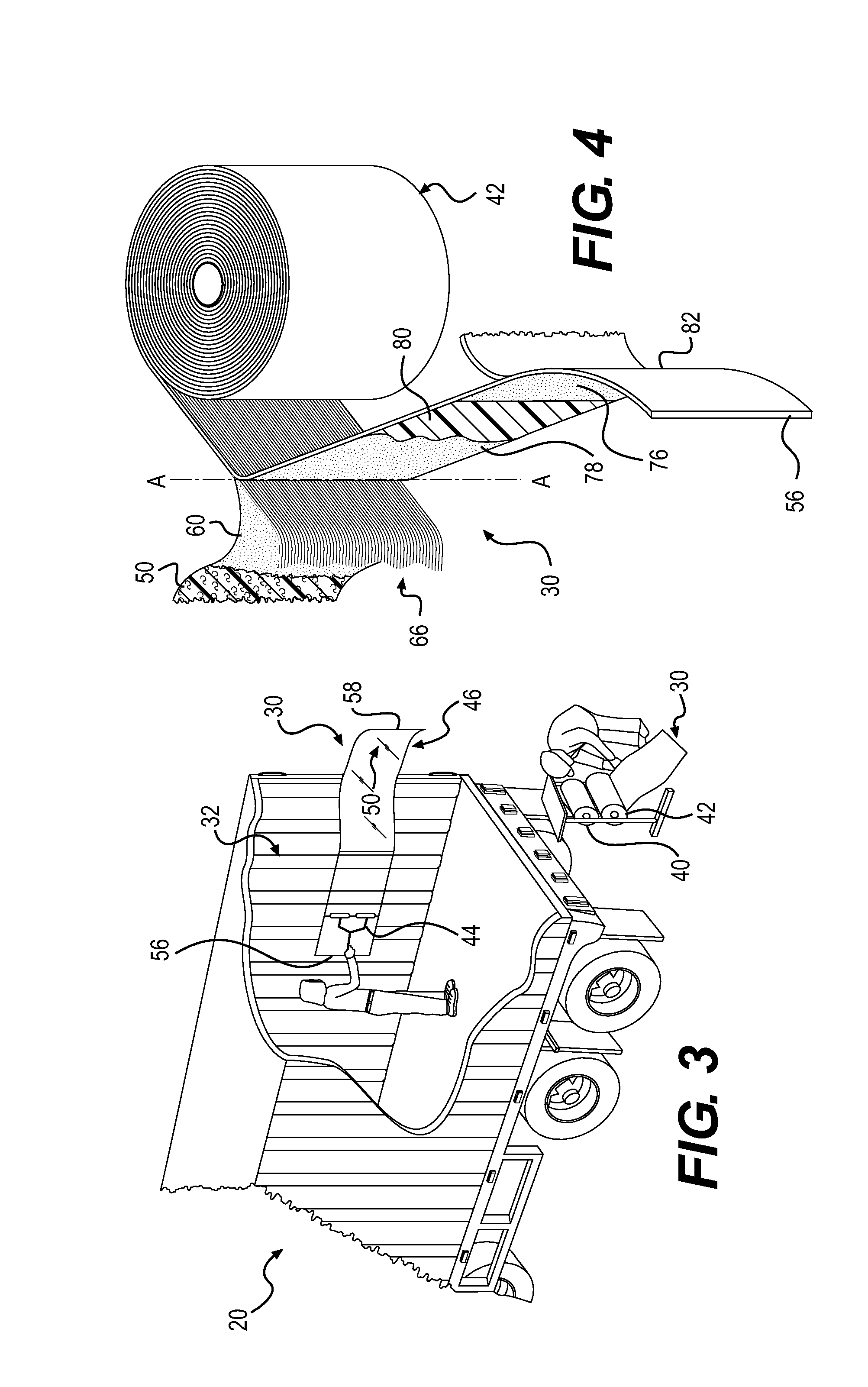Cargo restraint system with enhanced polyester reinforcement filament strand denier content
a technology of enhanced polyester reinforcement and cargo, which is applied in the direction of load securing, transportation and packaging, transportation items, etc., can solve the problems of large transport load, large momentum force, and potential to impart substantial damage to contents within intermodal containers, and cargo tends to build up considerable momentum
- Summary
- Abstract
- Description
- Claims
- Application Information
AI Technical Summary
Benefits of technology
Problems solved by technology
Method used
Image
Examples
Embodiment Construction
Context of the Invention
[0038]Referring now particularly to FIG. 1, a schematic illustration depicts an ocean going vessel 10 docked at a port and intermodal containers 12 are being loaded onto the ship. Cranes 14 mounted on board the ship or on the dock 16 are shown stacking intermodal containers on top of each other and the containers are ruggedly secured on the deck of the ocean going vessel 10. The subject invention may be advantageously used to secure cargo within the intermodal containers 12 or air transport containers, rail cars, truck trailers and the like.
[0039]FIG. 2 is an axonometric view, partially broken away, and discloses another operating context of the invention. In this view an intermodal or cargo container 20 is shown mounted upon a trailer 22 which is operably towed by a tractor 24 for land transport. Containers such as these are also often mounted on railway flat cars either directly or as attached to truck trailers 22.
[0040]A partially cut away rear corner port...
PUM
 Login to View More
Login to View More Abstract
Description
Claims
Application Information
 Login to View More
Login to View More - R&D
- Intellectual Property
- Life Sciences
- Materials
- Tech Scout
- Unparalleled Data Quality
- Higher Quality Content
- 60% Fewer Hallucinations
Browse by: Latest US Patents, China's latest patents, Technical Efficacy Thesaurus, Application Domain, Technology Topic, Popular Technical Reports.
© 2025 PatSnap. All rights reserved.Legal|Privacy policy|Modern Slavery Act Transparency Statement|Sitemap|About US| Contact US: help@patsnap.com



